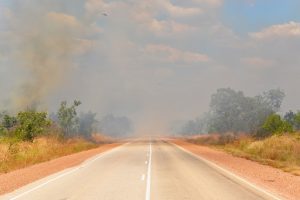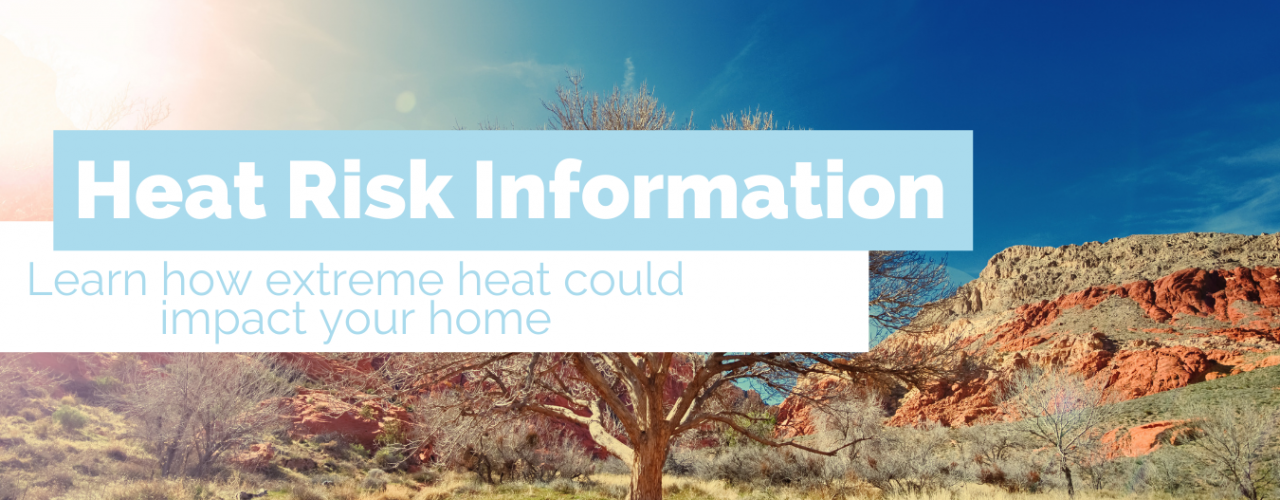
With temperatures continuing to climb each year, heat waves are becoming more common and lasting at longer rates in the United States. Extreme heat can lead to both internal and external home damage, posing risks for homeowners and homebuyers.
Using information from First Street Foundation and ClimateCheck, to provide comprehensive climate risk information for every zip code, neighborhood, city, and county in the contiguous U.S.
Ready to find your dream home?
It’s that easy. Let us put our experience to work for you.
Heat Risk Frequently Asked Questions
What is a heatwave?
A heatwave is a severe weather event that can be very dangerous to people and property. In general, a heatwave is a period of scorching weather that lasts two or more days, with temperatures above historical averages for a given area.
Most people know it can be dangerous to stay outside in extreme temps for an extended time and take steps to stay safe in extreme heat. Many of us, however, fail to understand that heat waves also damage property.
What causes a heatwave?
According to the National Oceanic and Atmospheric Administration (NOAA), heat waves result from the air that becomes trapped instead of following regular cycles and flows.
The air trap occurs when a high-pressure system forces air downward, preventing air near the ground from rising. The downward air pressure acts as a cover and traps warm air in place. When air can’t rise or follow a normal eastward cycle, the temperature continues to rise, causing a heatwave.
How hot is too hot inside of a house?
Staying in an extremely warm environment for too long can have ill effects on both people and property. For example, when the temperature ranges from 90˚F to 105˚F, some people may experience heat cramps and exhaustion. At even higher temperatures, between 105˚F and 130˚F, heat exhaustion is more likely; temperatures above 130 can lead to heatstroke, a dangerous health condition.
High temperatures can damage your property as well. When the temperature inside creeps above 80˚F, the refrigerator and stand-alone freezer run hotter, and air conditioning systems need to work more to keep the house cool. A reasonable temperature target for people and property is between 68-75˚F.
What effect does extreme heat have on your home?
- Foundation – Soil around a foundation will shrink as the ground heats up, and the moisture will evaporate. This causes soil to separate from the footing, potentially damaging to the foundation.
- Roof – During an extended period of high temperatures, a roof can expand and warp. This causes shingles to crack, making them more likely to leak when it rains or snows. Caulking around the flashing can also dry out, weakening the roof’s structure.
- Attic – Attics often lack good airflow. An attic is usually the hottest and most humid part of the house. Excess moisture and heat under the roof can cause the shingles to deteriorate at an accelerated rate.
- Floors – Extreme heat is not kind to hardwood floors either. Floorboards can warp or expand from the humidity that often comes along with extreme heat, causing a shift and creating an uneven surface.
- Pipes – Pipes can leak or break during periods of high water usage. When it’s hot, homeowners are more likely to use a hose, run a sprinkler or fill a swimming pool. This heavy water volume can damage pipes if they are poorly sealed.
How to keep your house cool in extreme heat?
How to protect your home from extreme heat?
Protecting your home from the damage caused by extreme heat or a heatwave is as important as keeping the interior comfortable for everyone living there. Start by investing in better insulation for your doors, windows, and walls to keep the heat out and the cool air in during the summer. In the interior of your home, be sure to always vent hot air out, whether that’s in your kitchen, bathroom, or laundry room.
For the exterior, place an awning or shade on the outside of your house to block the worst of the rays from your windows. You can also plant trees and bushes outside the windows that will soak up heat and provide you with welcome shade. To keep your roof cool, replace your shingles with a lighter color option that reflects light. Or to save money, consider painting the singles a light color instead. Looking for more tips? Learn additional tips to heat proof your home.
The Top 10 U.S. Cities Most at Risk of Extreme Heat
| Rank | City | Heat risk rating | Avg # of hot days (historical) | Avg # of hot days in 2050 | Hot day threshold (ºF) |
|---|---|---|---|---|---|
| 1 | Miami, FL | 100 | 8 | 90 | 92.6 |
| 2 | Tampa, FL | 100 | 8 | 88 | 94.1 |
| 3 | Corpus Christi, TX | 78 | 8 | 52 | 96.8 |
| 4 | Memphis, TN | 78 | 8 | 51 | 97.0 |
| 5 | Phoenix, AZ | 77 | 8 | 48 | 110.1 |
| 6 | Houston, TX | 77 | 8 | 51 | 96.8 |
| 7 | New Orleans, LA | 77 | 8 | 51 | 95.5 |
| 8 | San Antonio, TX | 76 | 8 | 48 | 100.8 |
| 9 | Louisville, KY | 76 | 8 | 47 | 94.0 |
| 10 | Mesa, AZ | 75 | 8 | 48 | 109.7 |
Interested in moving out of these areas of extreme heat?
It’s that easy. Let us put our experience to work for you.
*Heat risk is measured by the increase in extremely hot days for a location, with an extremely hot temperature (hot day threshold) defined by historical temperatures for the 8 hottest days per year in a location.



